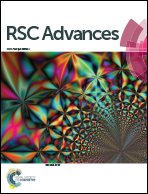Fluid flow analysis of continuous and segmented riblet structures
Abstract
The scales of fast-swimming sharks contain riblet structures with microgrooves, aligned in the direction of fluid flow, that result in water moving efficiently over the surface. In previous experimental and modeling studies, it has been shown that riblet structures provide a drag reduction by lifting the vortices formed in turbulent flow that generate transverse shear stresses. Drag reductions on the order of 10% when compared to a smooth, flat surface have been reported. Most experimental and modeling work has analyzed continuous riblet configurations with some experimental work for segmented riblet configurations. To better understand the role of vortices on drag reduction, various continuous and segmented, blade riblet geometries and their vortex structures were studied and compared with that for a flat surface. To understand the role of various segmented riblet designs, various shark-skin-inspired riblet structures were created in which riblet gaps and offsets were independently modified. Through this work, optimal riblet dimensions of spacing, height, thickness, gap, and offset were determined. A better understanding of riblet design for drag allows for the fabrication of drag-reducing surfaces in marine, medical, and industrial applications utilizing features ranging from the micro- to nanoscale dependent upon the scale of the components.


 Please wait while we load your content...
Please wait while we load your content...